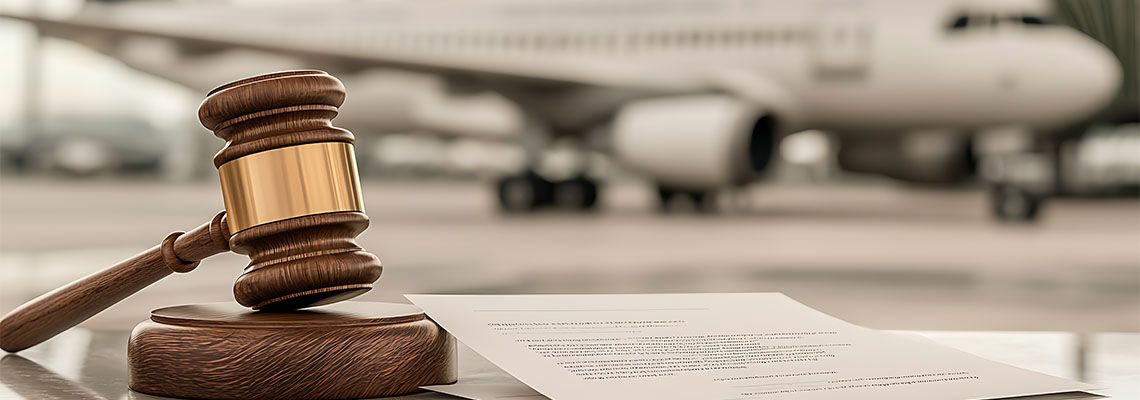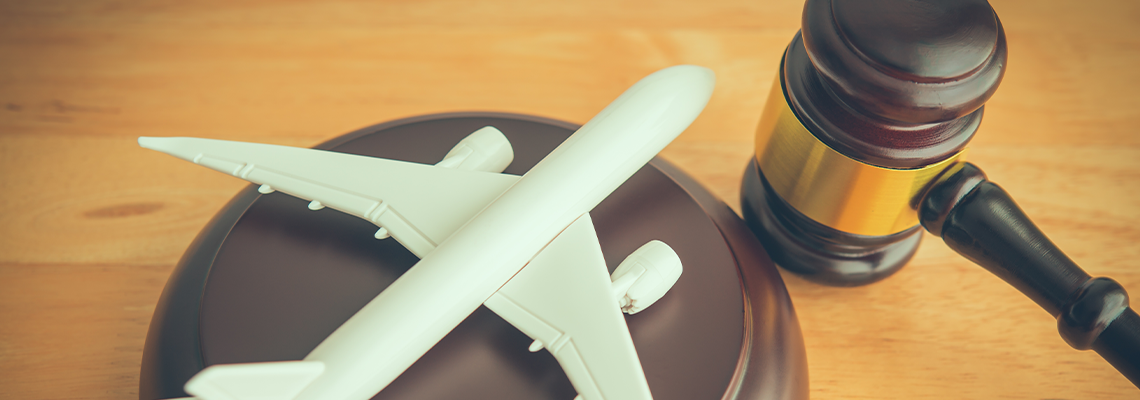Corporate aircraft are valuable assets that require meticulous care to operate safely, effectively, and in compliance with regulations. For aircraft owners, operators, and aviation businesses, it's not just about ensuring the aircraft remains airworthy but also about protecting the significant investments tied to these machines.

What Every Aviation Company Should Know About Liability in Drone-Related Incidents
The rapid growth of drone technology has revolutionized the aviation industry. Once primarily associated with military operations or hobbyists, drones have become essential tools for industries such as logistics, agriculture, surveying, and filmmaking. However, as commercial and operational drone use continues to expand, so do the legal and regulatory details surrounding their operation.
One of the most pressing concerns for aviation companies is liability in drone-related incidents. What happens when a drone causes property damage, personal injury, or violates airspace regulations? Understanding the potential legal ramifications can save companies from costly disputes and reputational harm.
William G. Harger & Associates, PLLC, works directly with aviation companies to address these challenges. Led by Bill Harger, a seasoned aviation attorney with over 25 years of experience and a former pilot himself, the firm provides unique, industry-focused insights tailored to the needs of its clients.
Based in Richmond, Texas, but serving clients across the United States and worldwide, the firm has a proven track record of helping aviation companies identify, mitigate, and resolve liability risks. Whether you’re an established aviation business or an emerging player in the drone industry, it's essential to understand your legal obligations so you can protect your business.
Understanding Drone-Related Liability
Liability in drone-related incidents falls into several categories, primarily involving negligence, privacy violations, product liability, and regulatory breaches. It's essential for aviation companies to identify which of these risks apply to their operations to mitigate their losses effectively.
Negligence Claims
One of the most common sources of liability is negligence, which occurs when a drone operator fails to exercise reasonable care during a flight. For example, if a drone crashes into a residential property or injures a pedestrian due to operator error, your company could be held liable for damages.
This type of incident often arises from inadequate operator training, poor maintenance protocols, or failure to adhere to safety guidelines. Developing strict internal policies, including mandatory training and detailed maintenance schedules, is crucial.
Product Liability
Even if your operations are flawless, your company could still face liability if an accident occurs due to a defective drone. Product liability encompasses issues such as design defects, manufacturing flaws, or inadequate instructions for safe operation.
Aviation companies that manufacture or sell drones must verify their products meet stringent safety standards. Additionally, keeping clear documentation of all inspections and tests can help protect your company if a drone-related incident leads to litigation.
Privacy and Data Protection Issues
Privacy violations are another significant area of concern. Many drones are equipped with cameras or data collection systems, which can trigger privacy disputes if they inadvertently capture footage of private property or sensitive information. Aviation companies must be proactive in complying with local privacy laws, limiting the data their drones collect, and ensuring that no privacy invasions occur during operations.
FAA Regulations and Breaches
Failure to comply with Federal Aviation Administration (FAA) regulations represents a significant liability risk. The FAA governs virtually all aspects of drone use in the U.S., from airspace restrictions to maximum flight altitudes.
Penalties for violations, whether accidental or intentional, can be severe, including hefty fines and operational restrictions. Companies are required to stay up to date with FAA rules and implement clear guidelines to avoid regulatory breaches.
The Cost of Failing to Prepare for Liability
The consequences of inadequate preparation for drone-related liability can be devastating. Legal disputes take time, cost money, and have the potential to damage your business's reputation, especially if a case garners significant media attention.
Additionally, insurance premiums may skyrocket if your company has a history of claims. By taking a proactive approach to liability mitigation, aviation companies can minimize these risks and protect their long-term vitality.
Steps to Reduce Your Liability
Minimizing liability in drone operations requires proactive measures and adherence to established protocols. Companies should implement robust strategies for regulatory compliance and operational safety. To safeguard your company from liability in drone-related incidents, consider these actionable steps:
Implement comprehensive training: All employees handling drones must be well-trained not only in flight operations but also in FAA regulations and safety protocols. Regular refresher courses can address new challenges or updates in the law.
Conduct regular maintenance and inspections: Develop a precise schedule for inspecting and maintaining drones to prevent accidents caused by equipment failure. Proper documentation adds another layer of protection for your company.
Obtain appropriate insurance coverage: Insurance that is designed explicitly for drone-related operations can help protect your company in the event of an accident. Work with an experienced aviation attorney to review your policies and create adequate coverage.
Adopt privacy policies: Develop strict policies that uphold privacy laws during drone operations. When in doubt, err on the side of caution and consult with a lawyer for guidance on data collection practices.
Stay current on FAA requirements: FAA regulations are constantly evolving to keep up with advances in drone technology. Collaborate with attorneys to stay ahead of these changes and integrate them into your operational practices.
Why Reach Out to William G. Harger & Associates, PLLC?
When faced with the details of drone-related liability, aviation companies shouldn’t try to figure it out alone. William G. Harger & Associates, PLLC, provides personalized legal solutions tailored to help companies identify and mitigate liability risks.
Few attorneys understand the unique challenges of the aviation industry as deeply as Bill Harger. Drawing on his extensive hands-on background as a former pilot and decades of experience in aviation law, Bill Harger provides practical, actionable strategies to protect businesses from unnecessary legal exposure.
The firm is uniquely positioned to assist clients with a range of legal needs, including compliance audits, liability assessments, and representation in disputes. With an office in Richmond, Texas, the firm collaborates with clients both locally and internationally, including aviation companies from Australia, Switzerland, and Mexico.
This international perspective allows William G. Harger & Associates, PLLC to tailor services to each client’s specific circumstances while maintaining a strong focus on FAA regulatory compliance. Reach out today.
RECENT POSTS
The aviation industry is a dynamic and complex sector, where businesses often collaborate to share resources, reduce costs, and expand their reach. One of the most effective ways to achieve these goals is through a joint venture. Whether it’s a partnership between airlines to streamline operations or a collaboration between manufacturers to develop cutting-edge aircraft technology, joint ventures play a pivotal role in shaping the industry.
The rapid growth of drone technology has revolutionized the aviation industry. Once primarily associated with military operations or hobbyists, drones have become essential tools for industries such as logistics, agriculture, surveying, and filmmaking. However, as commercial and operational drone use continues to expand, so do the legal and regulatory details surrounding their operation.



